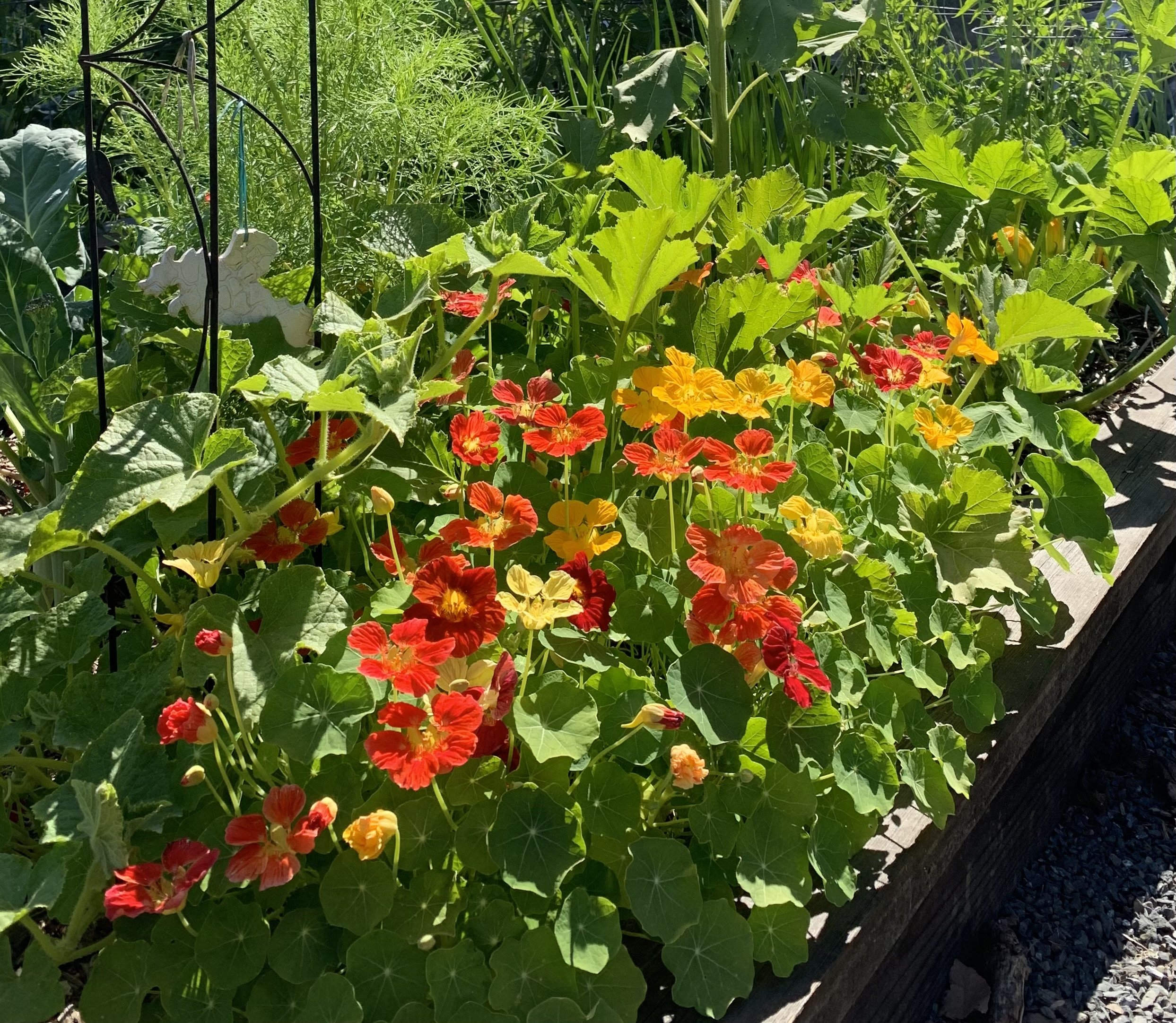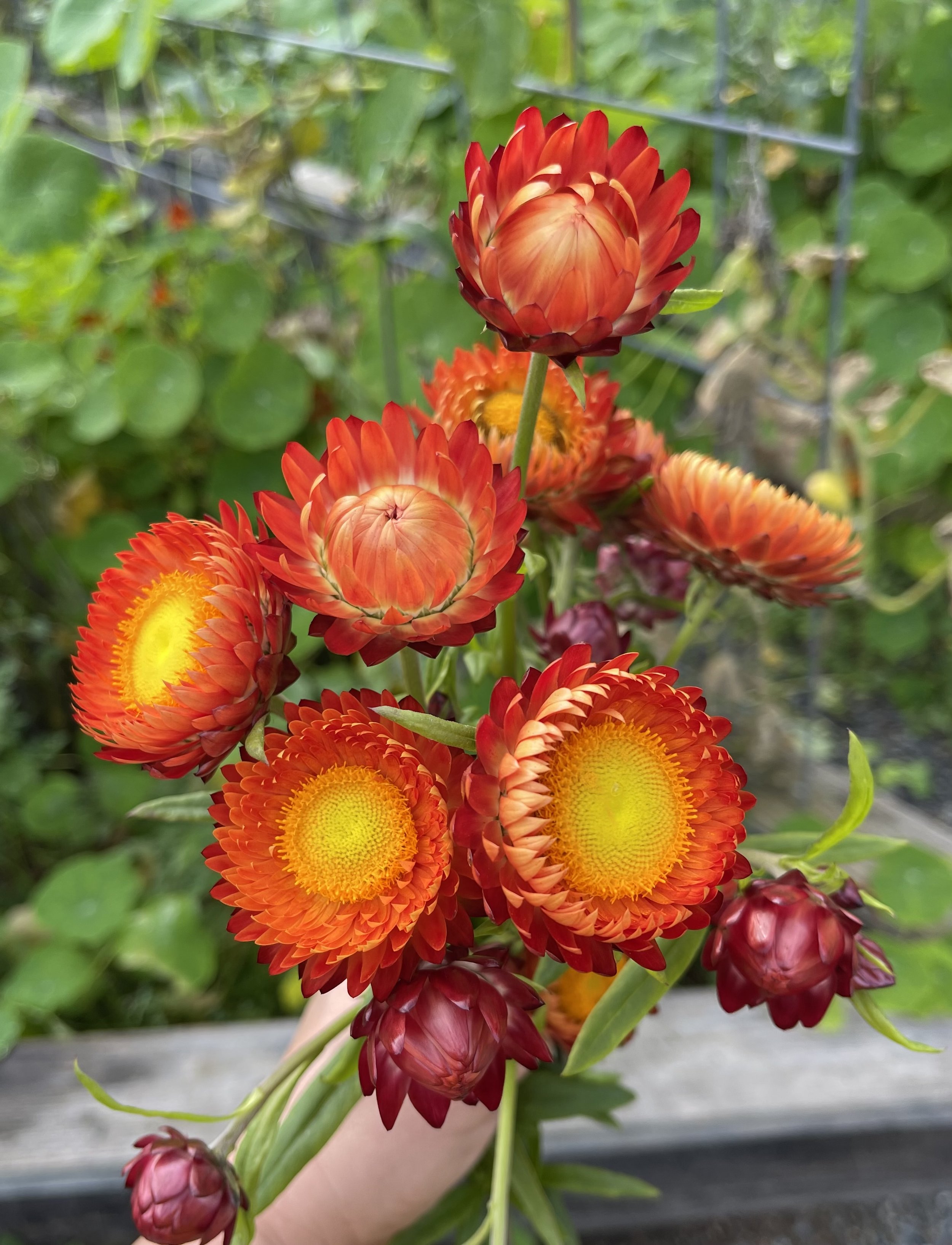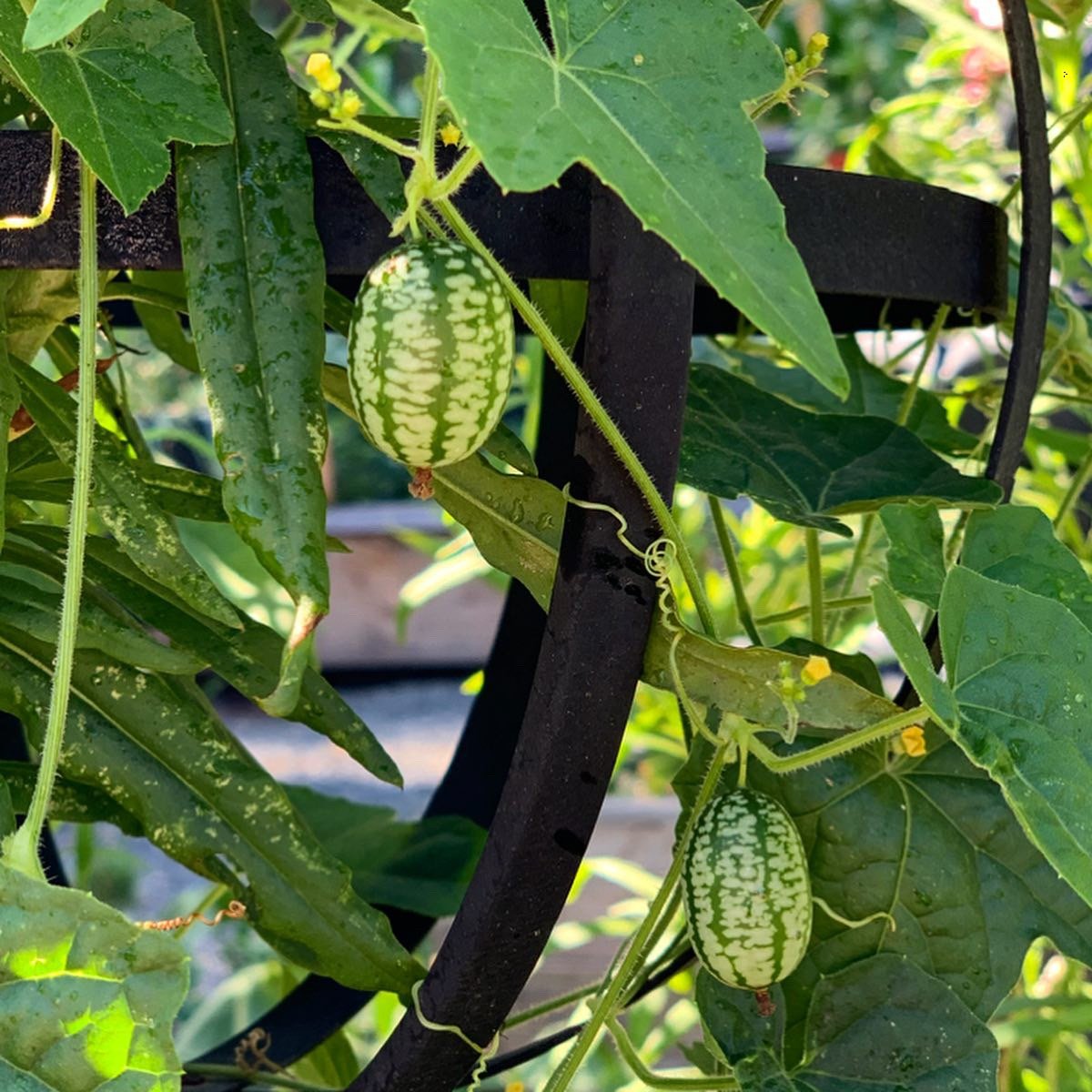Tomato Line-up- Cherokee Purple, Kellogg’s and Mr. Stripey
Although warm days will arrive and often last for days, I try hard to exercise restraint on planting my tomatoes. I’ve planted early more than once (mid-March!), and while they rarely die, much to my dismay, they just don’t thrive. I tried denying it until one year when I experimented and planted a few plants at the beginning of April and the rest when our nighttime temps stayed consistently above 50 (usually around early May). The first group grew little more than two inches and seemed stuck. The second group took off immediately after planting. Planting too soon only increased my workload by trying to keep the plants happy and frost-free. Tomatoes thrive in daytime temperatures between 70-85, and to set fruit, they need to have nighttime temps 55+, so it’s best to wait.
In the meantime, I’ll share some of my favorite tomato-growing tips and the varieties I can’t live without.
Did you know tomatoes will grow roots on their stem if buried? I learned this technique from a gardening book in my early twenties and have implemented it ever since. I remove the leaves halfway up the stem when I plant my starts. Next, I dig a hole, fill it with balanced organic fertilizer, and bury the plant up to the first set of leaves. Before you know it, roots will start forming along the stem, providing more water and nutrient uptake, plus a sturdier bracing structure. You can also apply this trick with all cucurbit family members: squash, pumpkins, cucumbers, melons, etc.
Brandywine
Now, on to my favorite varieties. I’m on the cooler side of West County, so I find cherry tomatoes grow better than sauce or beefsteak tomatoes because they need less time to ripen. Keep in mind, if you’re in downtown Monte Rio, eastward, you’ll have no trouble receiving the heat required for larger fruit. When picking varieties, I’ve narrowed them down to a group that creates a colorful mix and a balanced flavor profile. In other words, they aren’t all sweet or all red. My favorite slicer combo is Mr. Stripey (tart/green stripes), Brandywine (sweet/pink), Cherokee Purple (purple/tangy), and Kellogg’s Breakfast (orange/sweet).
Sweetheart Cherry
I always return to the orange Sungold and SunSugar, the red Sweet 100, and Sweetheart Grape for my cherry tomatoes. These sugary sweet varieties produce buckets of goodness and rarely get diseases. For tart varieties and the purples and yellows, novelties such as Brad’s Atomic Grape, Black Cherry, and Yellow Pear are a must-have.
You’ll experience a rainbow on your plate when you slice up a mix of these varieties. Toss them with olive oil, balsamic vinegar, a favorite cheese, basil, and a hint of salt and pepper, and you’ll enjoy the pot of gold at the end of the tomato rainbow.
If you have a favorite variety you can’t live without or growing tips, send me an email. I don’t think I’ve ever met a gardener who didn’t enjoy a bit of friendly bragging about their tomatoes. Happy Gardening!

















